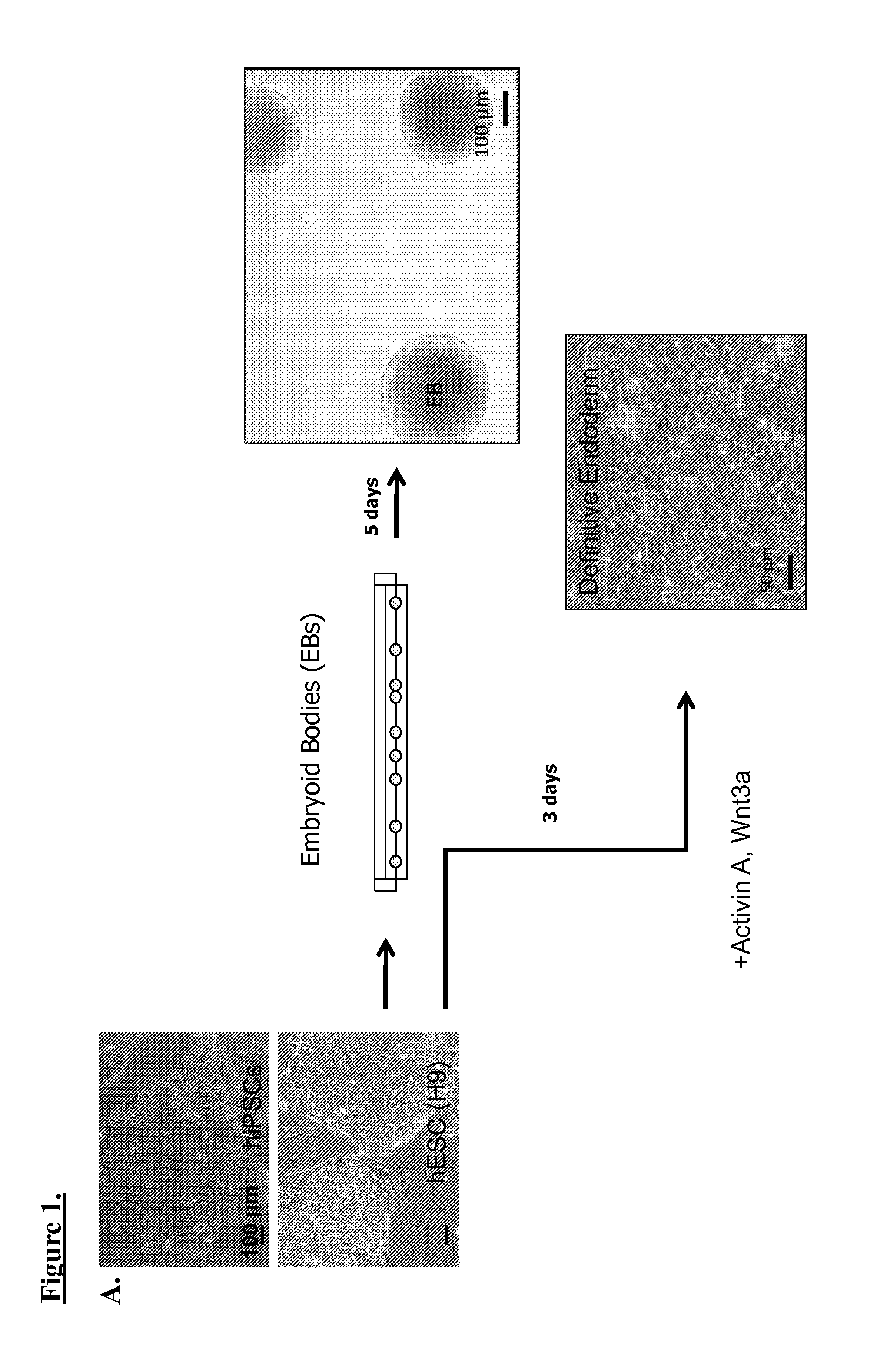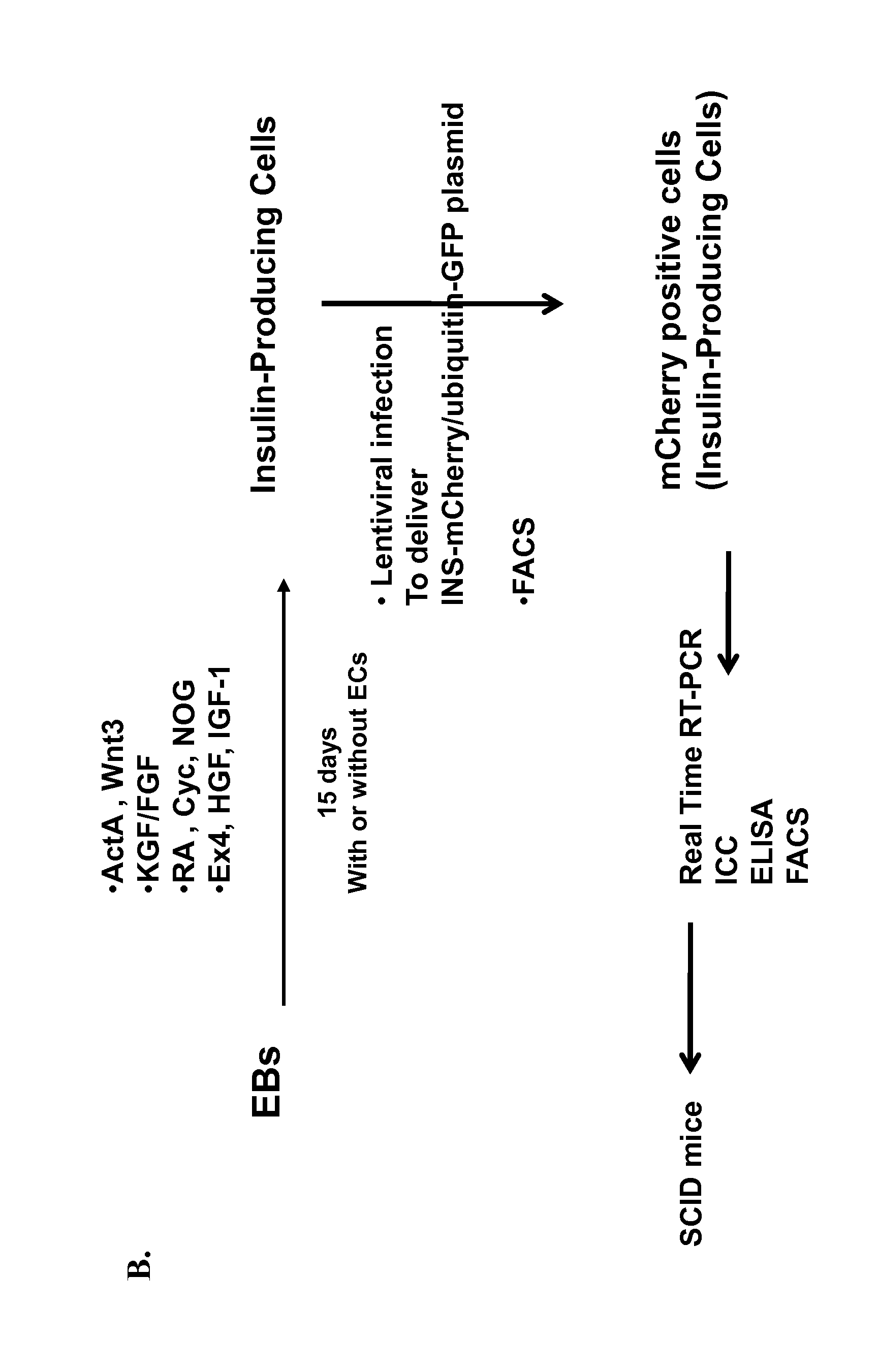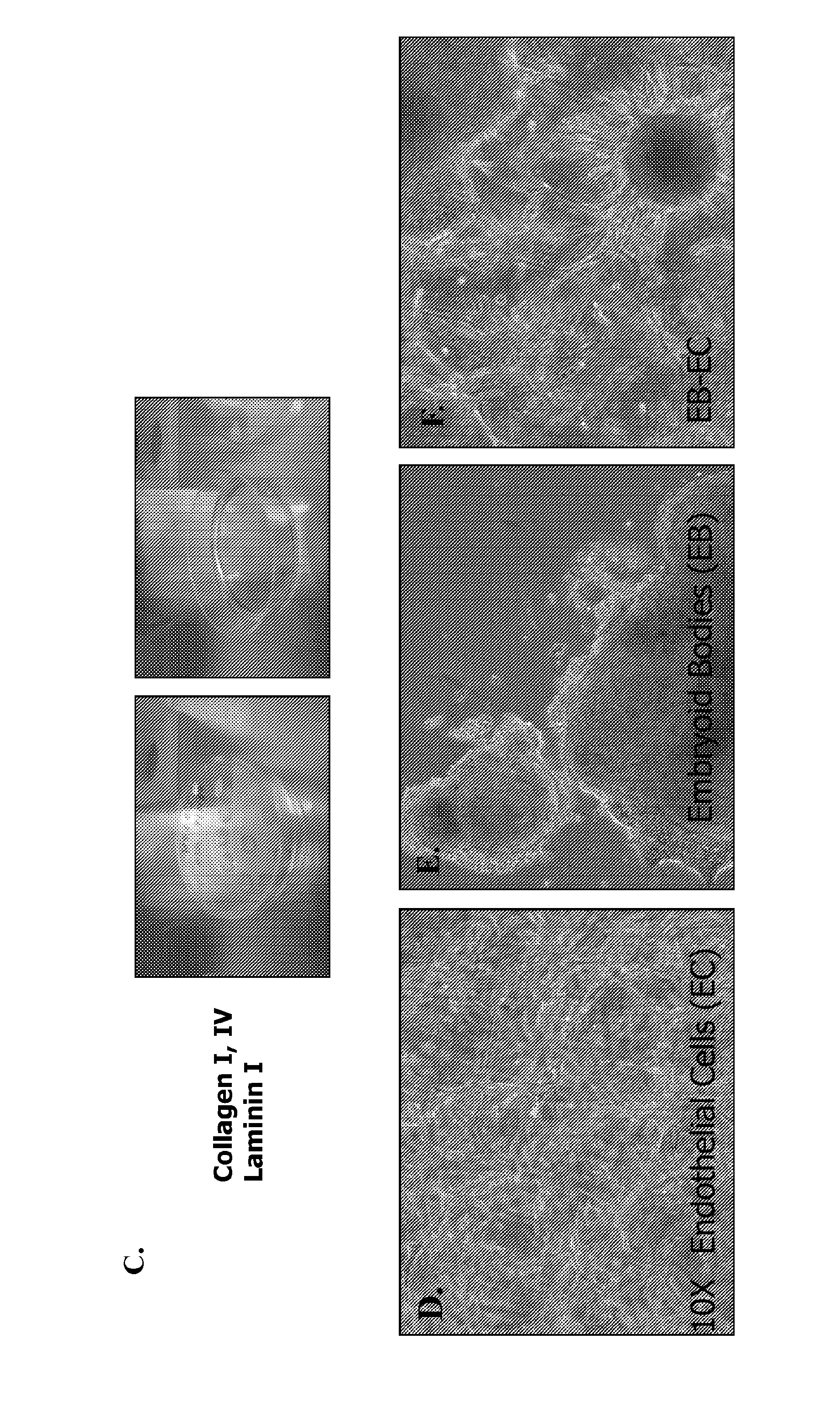Pancreatic insulin-producing beta-cell lines derived from human pluripotent stem cells
a technology of human pluripotent stem cells and pancreatic insulin, which is applied in the field of regenerative medicine applications, can solve the problems of insufficiently mature cells described in prior reports, difficult derivation and propagation of fully-differentiated insulin-producing beta-cells from human embryonic stem cells (hescs) or human induced pluripotent stem cells (hipscs), and small numbers of immature insulin-producing cells obtained in vitro. , to achieve the
- Summary
- Abstract
- Description
- Claims
- Application Information
AI Technical Summary
Benefits of technology
Problems solved by technology
Method used
Image
Examples
example 1
General Methods
[0068]Generally, the multi-step differentiation protocol for generating of beta-cells from pSCs is shown in FIG. 1. An embyroid body (EBs) formation step (FIG. 1a) can be applied, or a direct differentiation technique involving WNT pathway growth factors can lead to formation of definitive endoderm. As demonstrated in FIG. 1b, a multi-step growth factor cocktail can be added to EBs, for differentiation of pSCs can be differentiated into insulin-producing beta-cells, without or without co-culture in the presence of endothelial cells (ECs). An example of the EB / EC co-culture apparatus in collagen-laminin gel mixture is shown in FIG. 1c, containing human microvascular endothelial cells (HMECs), EBs, and co-culture (FIG. 1d, e, f, respectively). For analysis, these beta-cells can be labeled with a red fluorescent protein under the control of insulin promoter for isolation and expansion. Beta-cell marker expression was evaluated by immunocytochemistry and qRT-PCR. Quinacri...
example 2
Cells and Reagents
[0069]The human pluripotent stem cell lines and human embryonic stem cell line H9 were obtained from the iPSC core at Cedars-Sinai Regenerative Medicine Institute (RMI). Derivation of the iPSC at the core is performed by using the published Yamanka method for iPSC generation from human fibroblasts (Takahashi and Yamanaka, 2006; Nakagawa and Yamanaka, 2010). Expression of pluripotent markers (Oct-4, SSEA-3, SSEA-4, TRA 1-60, and TRA 1-81) and karyotyping has been done in the core to fully characterize these cells. The iPS cell line 83iCTR-n1 was used between passages 40-50. The H9 cell line was also obtained from RMI passage 20-30. Both cell lines were maintained in a feeder free system using culture dishes pre-coated with Matrigel. Culture medium for these cells consisted of mTeSR™1 basal media supplemented mTeSR™1 5× supplements (Invitrogen, Carlsbad, Calif.), 200 μM L-alanyl-L-glutamine (ATCC), 0.1 mM β-mercaptoethanol (STEMCELL Technologies, Vancouver, Canada). ...
example 3
EB Differentiation in the Presence of Growth Factor Cocktail
[0070]Embryoid bodies (EBs) were generated using AggreWell system (STEMCELLTechnologies, Vancouver, Canada) and according to manufacturer instructions. These EBs were maintained in AggreWell medium (STEMCELL Technologies, Vancouver, Canada) supplemented with 10 μM ROCK inhibitor (Sigma-Aldrich, St. Louis, Mo.) at 37° C. in humidified incubator at 5% CO2.
[0071]Alternatively, culturing in the presence of matrigel in high density plates can also be utilized to produce EBs of uniform size and consistency. Embryoid body formation media include IMDM is first prepared in a 15 mL falcon tube on ice (17% KO Serum Replacer, 1% MEM-NEAA, 1% L-alanyl-L-glutamine, 11004 Beta-mercaptoethanol, 1004 ROCK inhibitor, remainder up to 100% volume IMDM). Cells are harvested with Accutase, and placed in suspension. For example, from 2-3 confluent (70-80%) wells of a 6-well plate, these cells can make EBs in one 384-well plate. The cells can be c...
PUM
 Login to View More
Login to View More Abstract
Description
Claims
Application Information
 Login to View More
Login to View More - R&D
- Intellectual Property
- Life Sciences
- Materials
- Tech Scout
- Unparalleled Data Quality
- Higher Quality Content
- 60% Fewer Hallucinations
Browse by: Latest US Patents, China's latest patents, Technical Efficacy Thesaurus, Application Domain, Technology Topic, Popular Technical Reports.
© 2025 PatSnap. All rights reserved.Legal|Privacy policy|Modern Slavery Act Transparency Statement|Sitemap|About US| Contact US: help@patsnap.com



